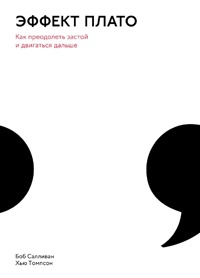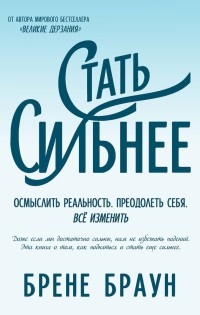Книга Эффект негативности. Как способность замечать плохое трансформирует нашу реальность - Джон Терни
Шрифт:
Интервал:
Закладка:
15 похитители детей: L. Skenazy, Free-Range Kids: How to Raise Safe, Self-Reliant Children (Without Going Nuts with Worry) (San Francisco: Wiley, 2009), 16; National Safety Council, Injury Facts Chart, https://www.nsc.org/work-safety/tools-resources/injury-facts/chart.
15 детей предподросткового возраста: J. M. Chua, «No Kidding, One in Three Children Fear Earth Apocalypse,» TreeHugger, April 20, 2009, https://www.treehugger.com/culture/no-kidding-one-in-three-children-fear-earth-apocalypse.html.
15 погибших в собственной ванной: J. Mueller and M. Stewart, Chasing Ghosts: The Policing of Terrorism (New York: Oxford University Press, 2016), 67.
15 каскадом доступной информации: T. Kuran and C. R. Sunstein, «Availability Cascades and Risk Regulation,» Stanford Law Review 51 (1999): 683–768, http://doi.org/10.2307/1229439, and J. Tierney, «In 2008, a 100 Percent Chance of Alarm,» New York Times, January 1, 2008, https://www.nytimes.com/2008/01/01/science/01tier.html.
15 40 процентов американцев: Mueller and Stewart, Chasing Ghosts, 7.
16 как Томас Хоббс: Leviathan (Mineola, NY: Dover, 2006), 70.
16 исследователи спросили взрослых: M. I. Norton, L. Anik, L. B. Aknin, and E. W. Dunn, «Is Life Nasty, Brutish, and Short? Philosophies of Life and Well-Being,» Social Psychological and Personality Science 2 (2011): 570–75.
16 чтобы преодолеть неприязнь: P. Rozin, «Getting to Like the Burn of Chili Pepper: Biological, Psychological and Cultural Perspectives,» in Chemical Senses, vol. 2, Irritation, ed. B. G. Green, J. R. Mason, and M. R. Kare (New York: Marcel Dekker, 1990), 231–69.
Глава 1: Насколько плохое плохо?
22 Шварц пришел к заключению: R. M. Schwartz, C. F. Reynolds III, M. E. Thase, E. Frank, and A. L. Fasiczka, «Optimal and Normal Affect Balance in Psychotherapy of Major Depression: Evaluation of the Balanced States of Mind Model,» Behavioural and Cognitive Psychotherapy 30 (2002): 439–50.
23 перспектив брака: F. Fincham, «Marital Conflict: Correlates, Structure, and Context,» Current Directions in Psychological Science 12 (2003): 23–27, and J. W. Howard and R. M. Dawes, «Linear Prediction of Marital Happiness,» Personality and Social Psychology Bulletin 2 (1976): 478–80.
23 психолог Харрис Фридман: H. L. Friedman, «A Test of the Validity of the Slater-Sussman Measure of Marital Integration» (master’s thesis, Emory University, 1971).
23 Джон Готтман определил: R. W. Levenson and J. M. Gottman, «Marital Interaction: Physiological Linkage and Affective Exchange,» Journal of Personality and Social Psychology 45 (1983): 587–97; R. W. Levenson and J. M. Gottman, «Physiological and Affective Predictors of Change in Relationship Satisfaction,» Journal of Personality and Social Psychology 49 (1985): 85–94; and J. M. Gottman, «The Roles of Conflict Engagement, Escalation, and Avoidance in Marital Interaction: A Longitudinal View of Five Types of Couples,» Journal of Consulting and Clinical Psychology 61 (1993): 6–15.
24 заключили Канеман и Тверски: D. Kahneman and A. Tversky, «Choices, Values, and Frames,» American Psychologist 39 (1984): 341–50.
24 Лондон и Мадрид: P. D. Windschitl and E. U. Weber, «The Interpretation of ‘Likely’ Depends on the Context, but ‘70 %’ Is 70 % – Right? The Influence of Associative Processes on Perceived Certainty,» Journal of Experimental Psychology: Learning, Memory, and Cognition 25 (1999): 1514–33.
24 Чем сценарий ближе нам: B. Bilgin, «Losses Loom More Likely Than Gains: Propensity to Imagine Losses Increases Their Subjective Probability,» Organizational Behavior and Human Decision Processes 118 (2012): 203–15.
24 изучающие мышление азартных игроков: E. Rubaltelli, S. Dickert, and P. Slovic, «Response Mode, Compatibility, and Dual-Processes in the Evaluation of Simple Gambles: An Eye-Tracking Investigation,» Judgment and Decision Making 7 (2012): 427–40.
25 Экономист Ричард Талер: R. H. Thaler, «The Value of Saving a Life: A Market Estimate» (Ph. D. diss., University of Rochester, 1974).
25 Исследования настроения рабочих: A. G. Miner, T. M. Glomb, and C. Hulin, «Experience Sampling Mood and Its Correlates at Work,» Journal of Occupational and Organizational Psychology 78 (2005): 171–93.
25 психолог Барбара Фредриксон: B. L. Fredrickson, «Positive Emotions Broaden and Build,» Advances in Experimental Social Psychology 47 (2013): 1–53.
26 методом понимания: К сожалению, другой исследователь довёл результаты исследования дневников Фредриксон до нелепого. Психолог Марсиаль Лосада проанализировал данные дневников с помощью сложной математической модели, основанной на уравнении динамики жидкости и газа. Его подсчеты определили пропорцию 2.9013, то есть предполагаемую минимальную пропорцию позитивных и негативных эмоций, необходимых человеку для процветания. Большинство психологов не занимались математикой, но результаты, опубликованные в 2005 престижным журналом впечатляли.; см B. L. Fredrickson and M. F. Losada, «Positive Affect and the Complex Dynamics of Human Flourishing,» American Psychologist 60 (2005): 678–86. Пропорция позитивности 2.9013 стала известной как Линия Лосады и её восторженно цитировали, пока другие исследователи не пришли к выводу, что это ерунда, основанная на произвольных предположениях и простых математических ошибках: см N. J. L. Brown, A. D. Sokal, and H. L. Friedman, «The Complex Dynamics of Wishful Thinking: The Critical Positivity Ratio,» American Psychologist 68 (2013): 801–13. Критика была резкой, но Лосада не стал отвечать, а Фредриксон согласилась, что сложный математический анализ имел погрешности. В результате журнал American Psychologist официально исключил разделы статьи про подсчеты Лосады, но оставил разработки Фредриксон. Этот эпизод был очень неловким, ведь как столько психологов могли повестись на математическую ерунду? Однако это не обесценило полевое исследование Фредриксон или многие другие исследование, основанные на базовой арифметике и сравнивающие влияние хороших и плохих событий, как отметила Фредриксон в своем ответе в 2013 году см B. L. Fredrickson, «Updated Thinking on Positivity Ratios,» American Psychologist 68 (2013): 814–22.
27 психолог Рэнди Ларсен: R. J. Larsen, «Differential Contributions of Positive and Negative Affect to Subjective Well-Being,» in Eighteenth Annual Meeting of the International Society for Psychophysics, ed. J. A. Da Silva, E. H. Matsushima, and N. P. Riberio-Filho (Rio de Janeiro, Brazil: International Society for Psychophysics, 2002), 186–90. Смотрите также R. J. Larsen and Z. Prizmic, «Regulation of Emotional Well-Being: Overcoming the Hedonic Treadmill,» in The Science of Subjective Well-Being, ed. M. Eid and R. J. Larsen (New York: Guilford Press, 2008), 258–89.
29 оценивать как с помощью опросов: D. DiMeglio, «Customer Satisfaction Stagnates in Ominous Sign for Economy, ACSI Data Show,» press release, National ACSI Q1 2018, July 12, 2018, http://www.theacsi.org/news-and-resources/press-releases/press-2018/press-release-national-acsi-q1–2018; R. East, K. Hammond, and M. Wright, «The Relative Incidence of Positive and Negative Word of Mouth: A Multi-category Study,» International Journal of Research in Marketing 24 (2007): 175–84; and T. O. Jones and W. E. Sasser, «Why Satisfied Customers Defect,» Harvard Business Review (November – December 1995), https://hbr.org/1995/11/why-satisfied-customers-defect.

























